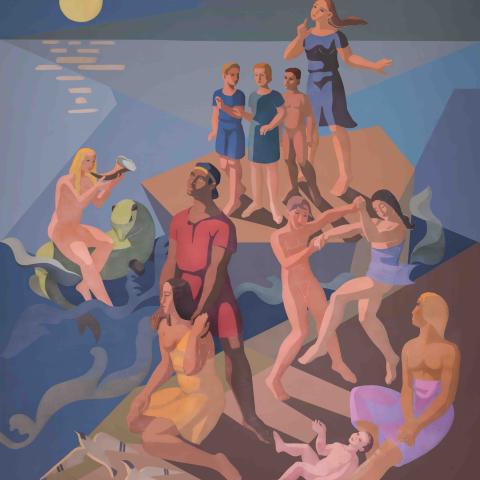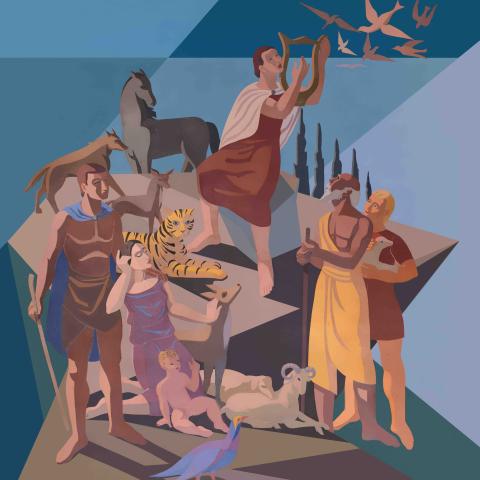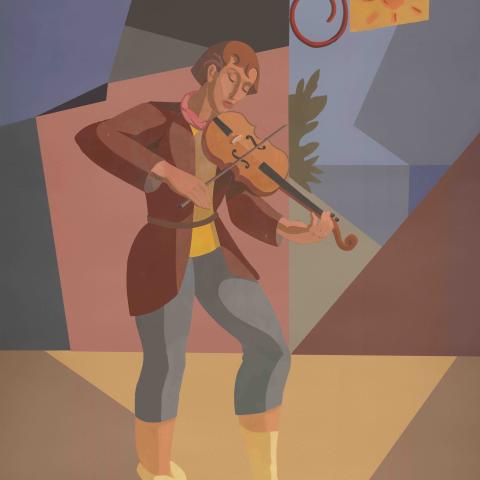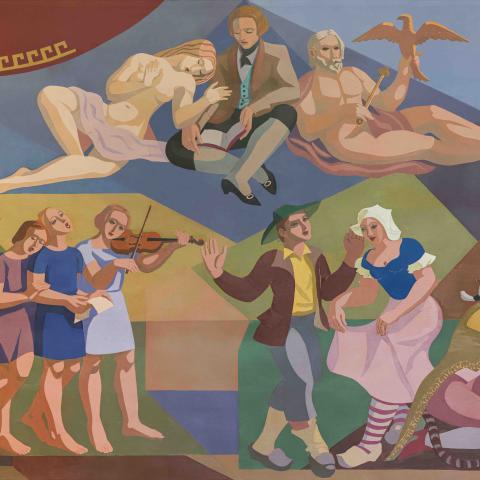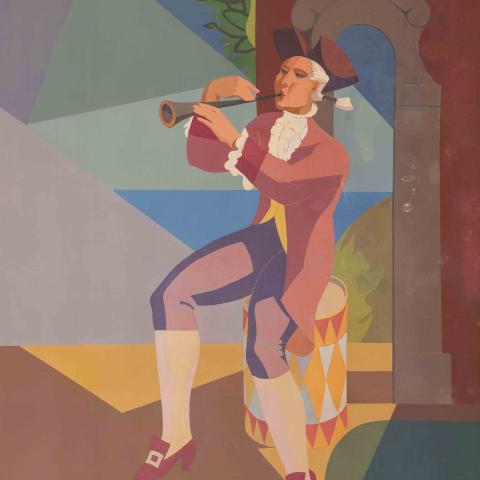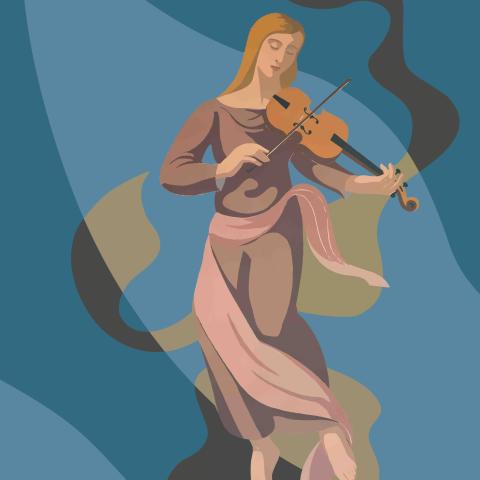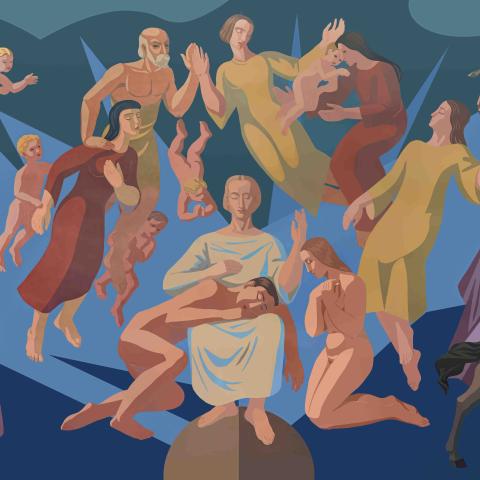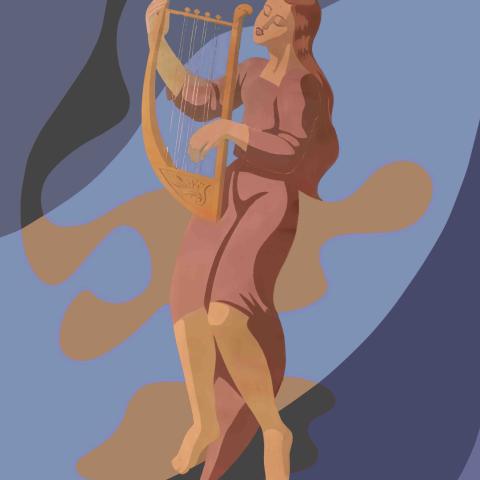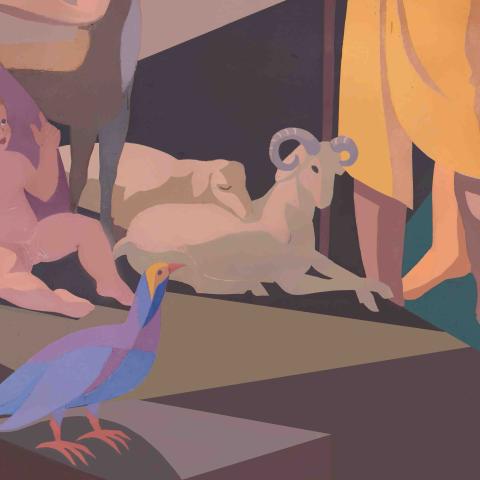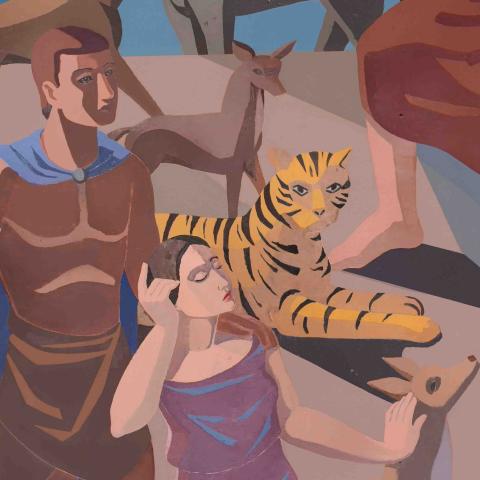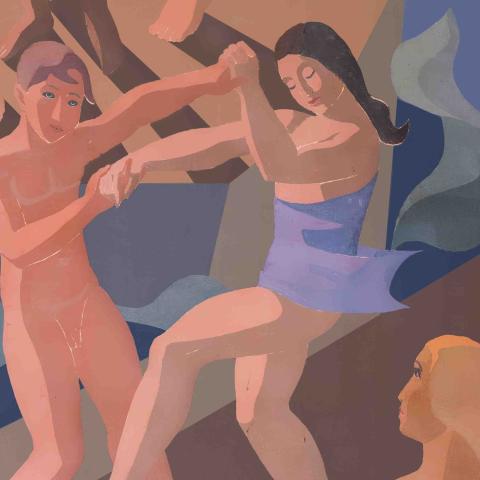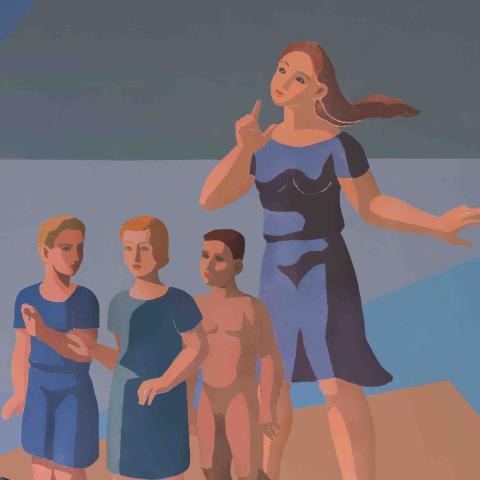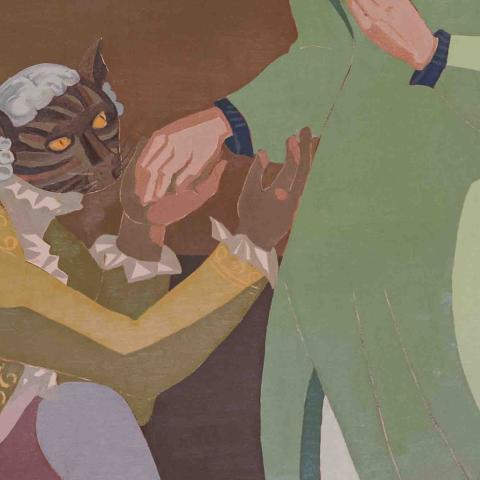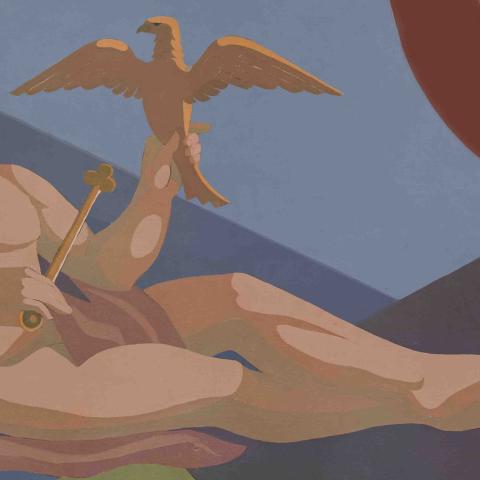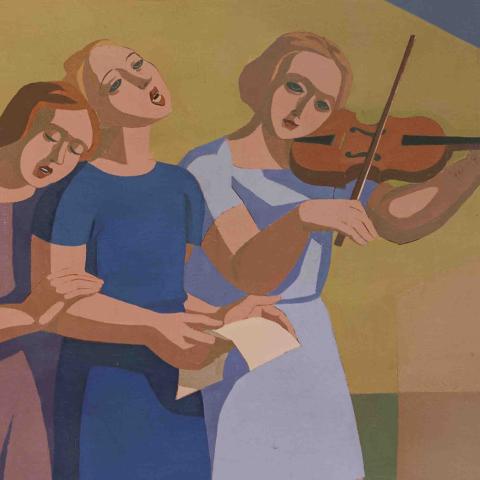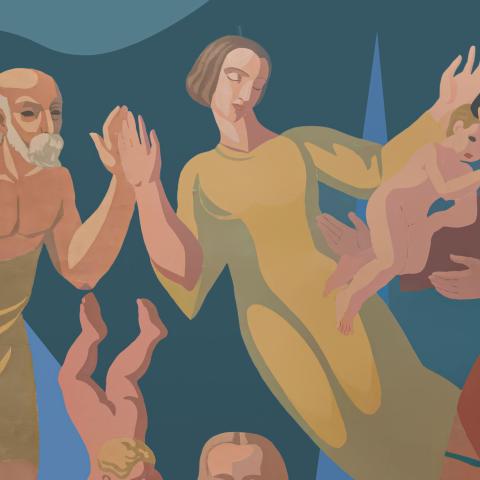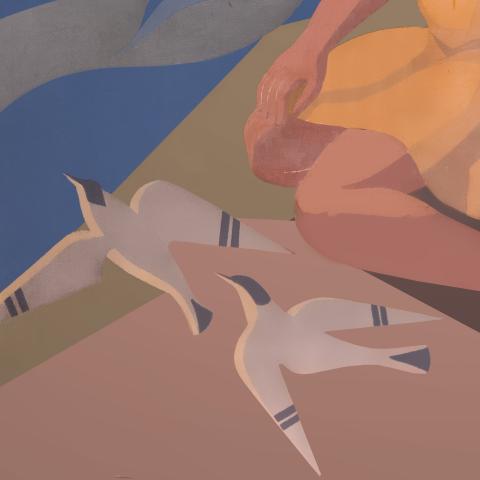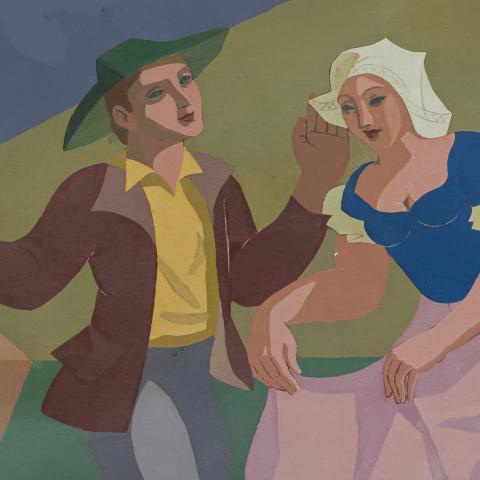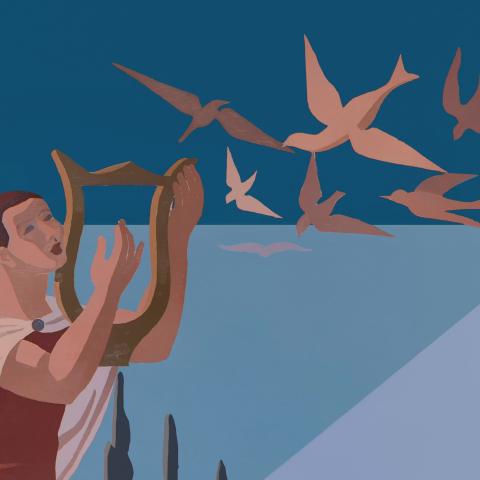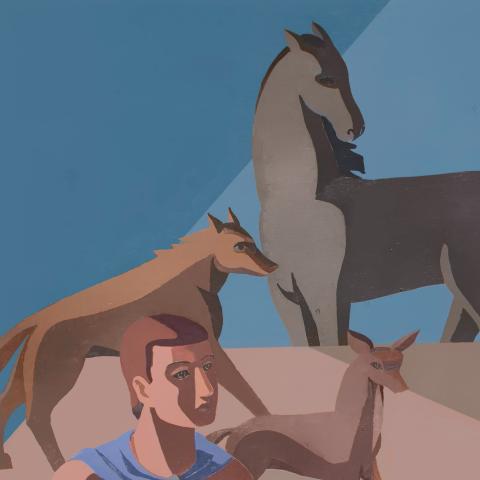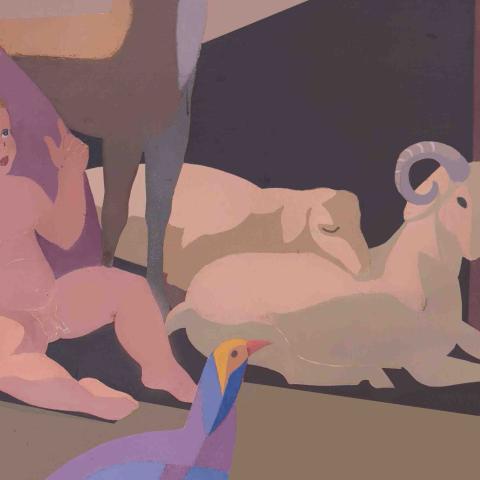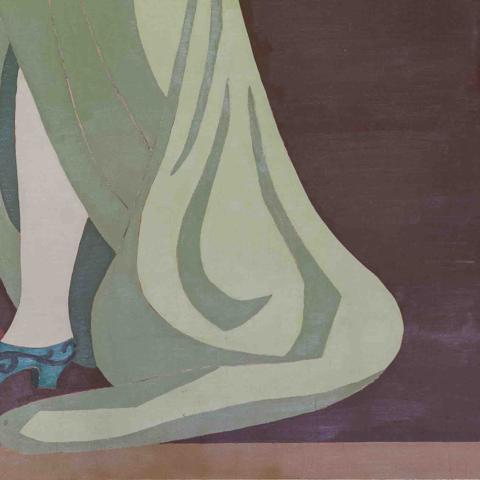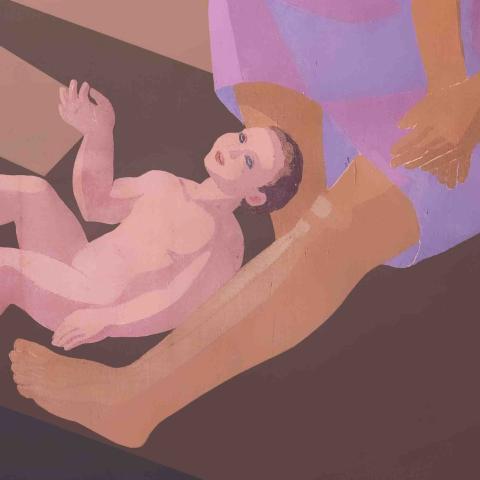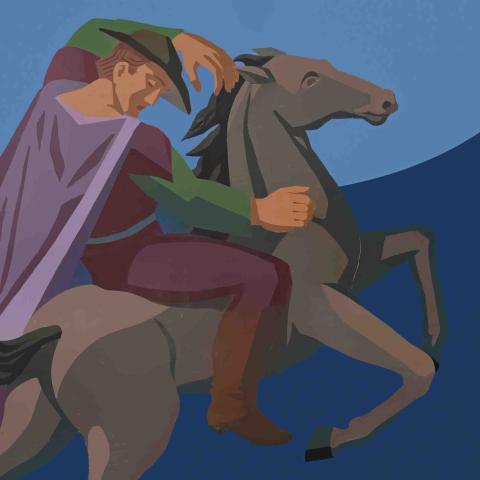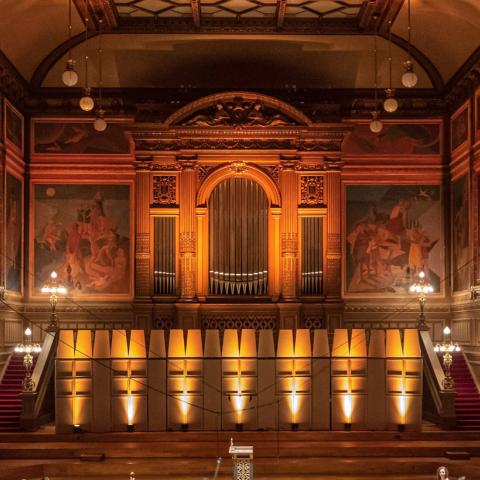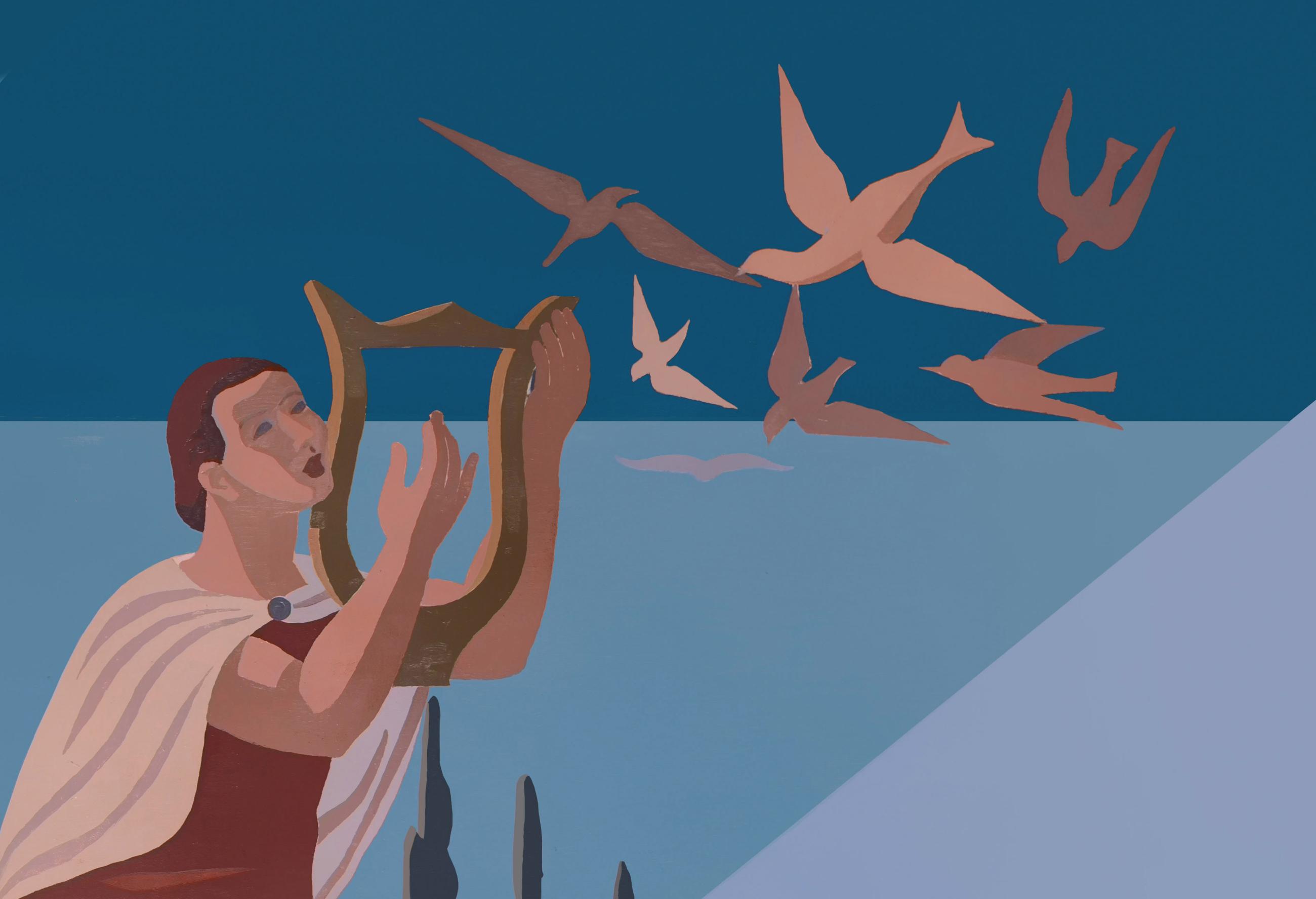The Edgar Scauflaire paintings
Created between 1952 and 1954, the 16 murals by Liège painter Edgard Scauflaire enhance the Salle Philharmonique with an exceptional collection of iconographic works inspired by musical themes.
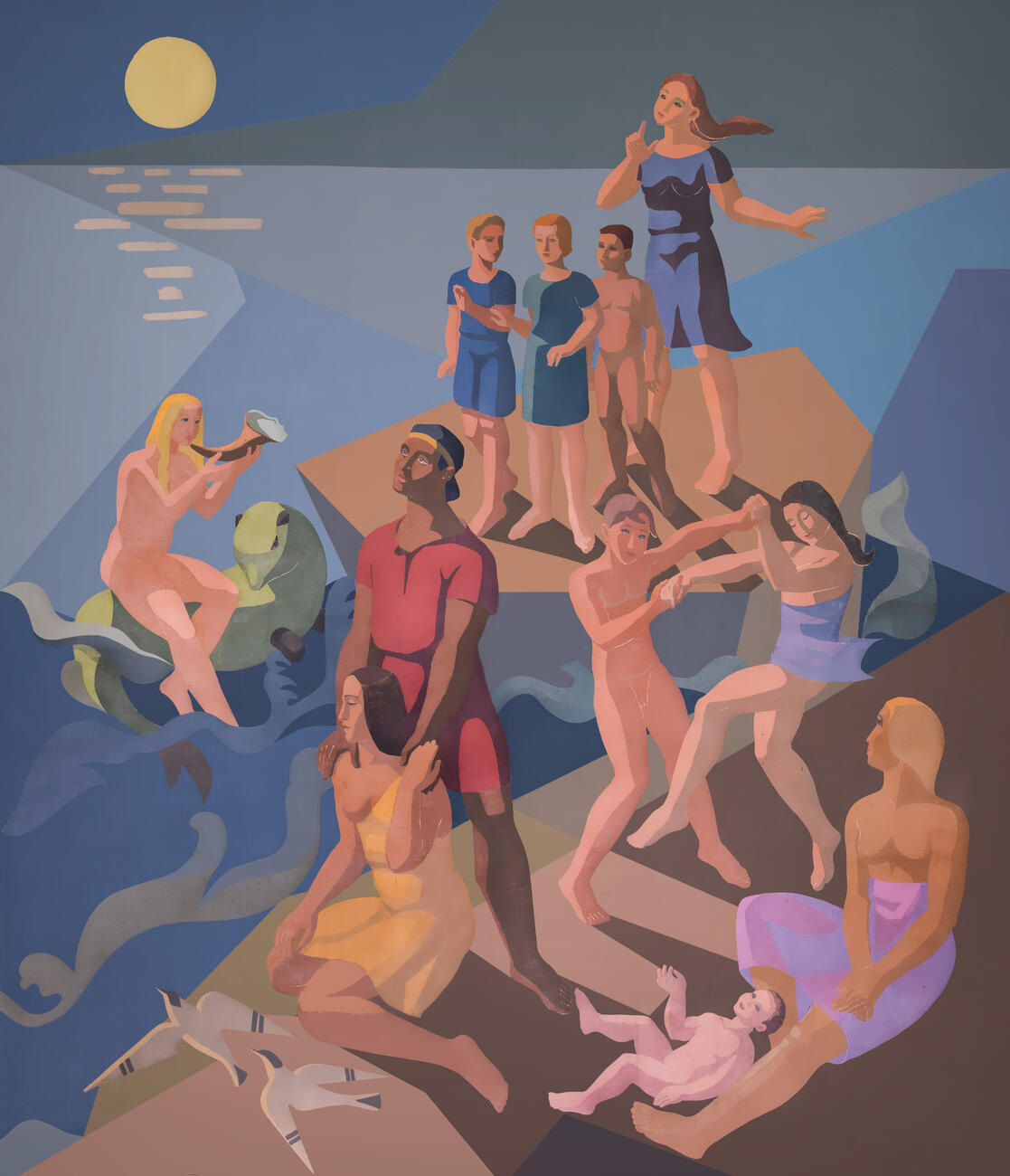
When the Salle Philharmonique was inaugurated (1887), the stage walls were nothing more than large, flat surfaces demarcated by gilded moulded frames. In the early 1950s, Mr Christophe, Director General of the Department of Fine Arts and Public Education, had the excellent idea of commissioning Edgar Scauflaire (1893-1960), a renowned painter from Liège, to paint large murals to decorate the bare panels. Scauflaire, who had already produced some large-scale works (pastel drawings, stained glass windows, paintings on glass, theatre curtains, etc.), chose to work with oil paints for this undertaking. The painters Jean Debattice, José Delhaye and Valère Saive helped him with the project. Divided into 16 panels of varying sizes, the three stage walls were completed across two different periods. The first, completed in 1952, involved decorating the lower panels of the side walls. The second, including all the remaining panels, was not completed until 1954.
With clear similarities to his easel painting (use of symmetry, juxtaposition of coloured surfaces as a background, some influence of Cubism), Scauflaire's murals are a fine example of the integration of modern art into a work of ancient art. The risk of the works being painted over, supported at the time by some detractors, was behind a counter movement that led to the building being listed on 27 May 1986.
Between 1998 and 2000, the paintings were cleaned as part of the restoration of the Salle Philharmonique. In 2023, Thierry Lechanteur photographed 8 of the 16 panels in high definition. In September and October of the same year, to mark the centenary of his very first exhibition, Scauflaire was honoured by Les Amis de l'Orchestre Philharmonique Royal de Liège with two exhibitions, one at the Salle Philharmonique (drawings, charcoals, pastels), the other at the Galerie des Beaux-Arts (paintings).
While the upper panels are decorated simply with cherubs, weightier subjects concern the panels at the back of the stage and the centre of the side walls. To the left of the organ, The Birth of Music imagines the first occurance of music: a couple tries out a few dance steps to the sound of a conch shell being played by a young girl perched on a sea animal, something resembling a prehistoric creature. Scauflaire took the view, as did Plato, that dance and music emerged simultaneously and are thus inseparable.
In The Myth of Orpheus, on the opposite side, the subject is that of Orpheus charming humans, animals, plants and land with the sound of his lyre. This famous myth, dating back to Antiquity and frequently revived over the centuries, particularly during the Florentine Renaissance (thanks to the philosopher Marcile Ficino), highlights the psychological power of music over all living beings and all of creation.
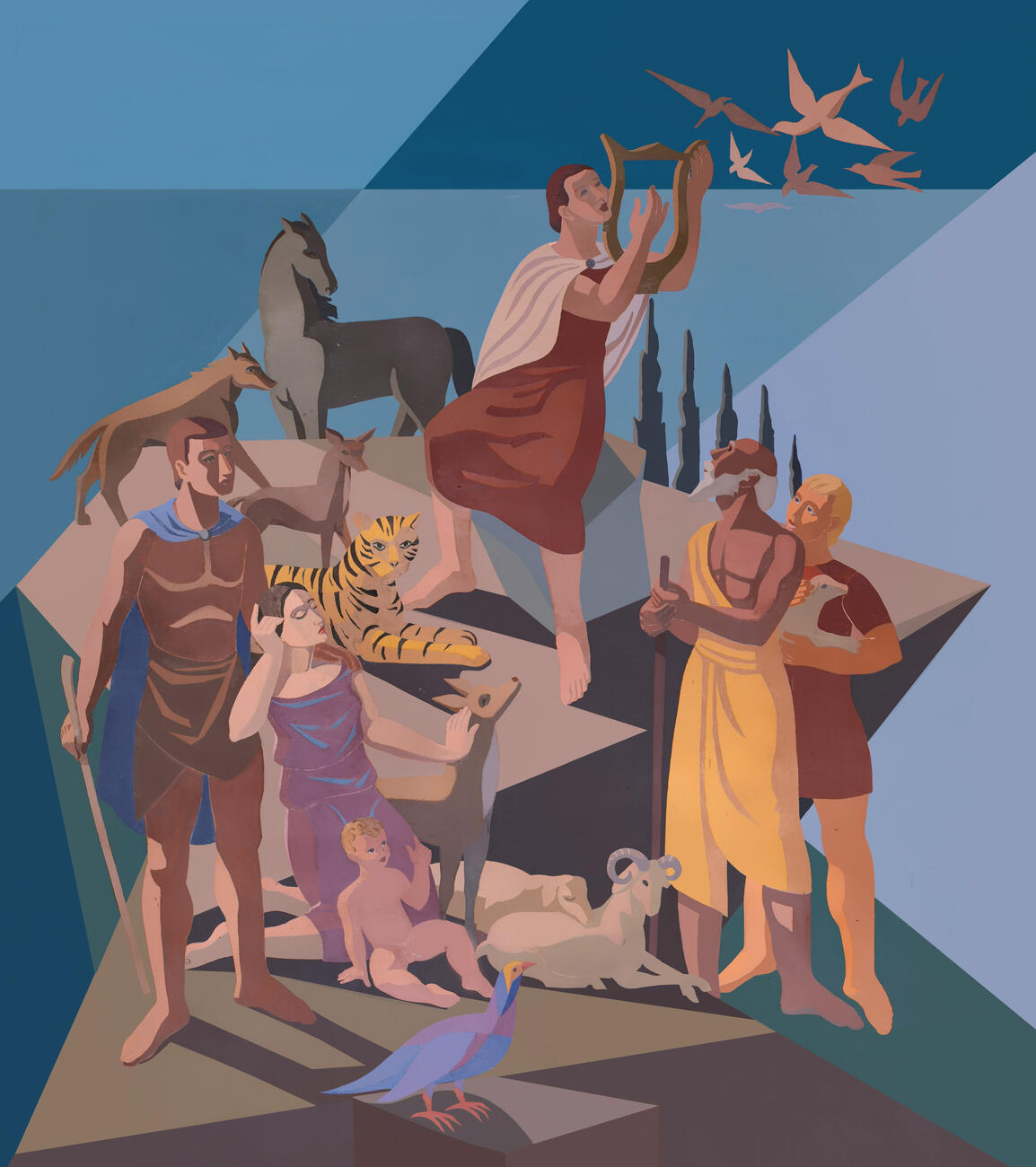
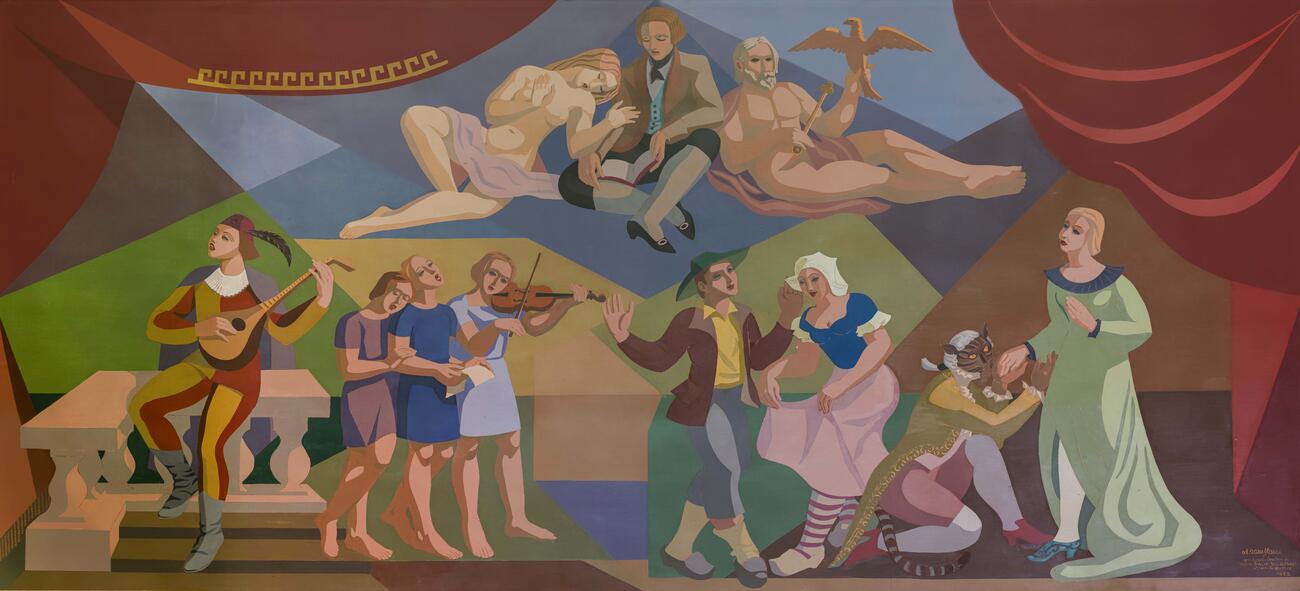
Leaving mythology behind, for the side walls, Scauflaire painted a tribute to two illustrious composers from Liège: André-Ernest-Modeste Grétry (right, courtyard side) and César Franck (left, garden side). L'Hommage à André-Modeste Grétry (1741-1813) is placed between two panels, the left depicting a harpist, and the right, a man seated on a drum, playing a wind instrument, both wearing 18th-century clothing. The main panel, of which there exists an oil painting which served as a draft, presents Grétry at the top the scene. He is holding a book rather than a score, probably an allusion to the fact that Grétry was not only a composer but also a writer. He is flanked on one side by a female nude, perhaps an inspirational muse, and on the other side by an older man holding a sceptre and an eagle (Grétry was highly regarded during both the Ancien Régime and the Empire).
Below these three figures are various scenes taken from compositions by Grétry. On the right, a man with the head of a cat bows to a young woman; both appear to be from the comic opera Zémire et Azor, a work inspired by La Belle et la Bête by J.-M. Leprince de Beaumont. Next to them, several villagers are dancing, evoking Six nouvelles romances, instrumental music reflecting village gaiety. On the left, the troubadour may be related to the comic opera Richard the Lionheart.
L'Hommage à César Franck (1822-1890) is also between two panels, depicting female musicians. The central scene is composed entirely of characters from his works. In the middle of this scene are Les Béatitudes : Christ towers over a globe, soothing the sorrows of humanity with a hand gesture. The figures in the background seem to be blessed ones.
On the left, two female figures seem to suggest the oratorios Ruth (1846) and Rebecca (1881), taken from l’Ancien Testament: while Ruth carries the ears of wheat she has harvested from the fields of her future husband, Boaz, Rebecca carries a jug of water that she offers to a servant sent by Abraham, father of her future husband Isaac.
On the right, the horseman and the doe reference the symphonic poem The Accursed Huntsman, inspired by a medieval ballad by Bürger. The Count of the Rhine, rather than attend Sunday mass, joins a hunting party. While the bells are sounding and hymns are being sung, he defies the pious souls who plead with him to join the mass and sets off into the forest. He finds himself alone, his horse refusing to move. A voice from beyond the grave curses him forever and flames engulf him from all sides. Scauflaire represents that moment when the horse rears up.
Main source : QUIRIN (Delphine) et MARAITE (Louis), Edgar Scauflaire (1893-1960), peintre-poète. Exhibition catalogue from « Edgar Scauflaire » organized at the Générale de Banque, Liège headquarters, from 17 May to 30 June 1994.

Les peintures d'Edgar Scauflaire (photos : Thierry Lechanteur)
